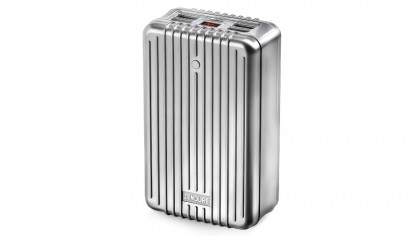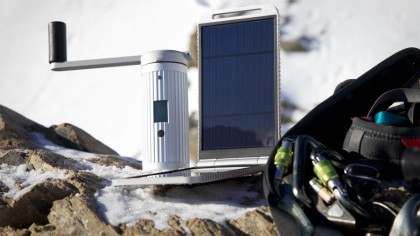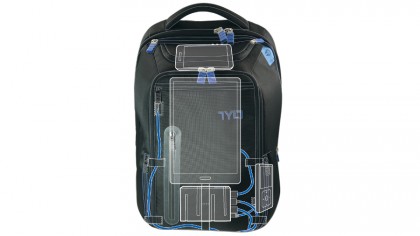How to extend your phone, tablet or laptop battery life on the move
Power has become an obsession in the digital age

Making sure you have enough power for your gadgets when you are on the move is a constant headache. As the number of devices we all carry has expanded, so has our consumption of power. Britons alone throw away 600 million batteries every year, but batteries are no longer the only way to carry the power you need to keep your devices working all day every day.
When working on the move the importance of a reliable and plentiful supply of power is even more important. However, keeping phones, tablets and your notebook PC charged and working is only the tip of the iceberg. Today it's possible to create a mobile office that doesn't need a mains power socket to deliver truly off-grid working. And the need for power is clear with EE's recent Power Bar giveaway being a runaway success.
Battery packs
Basically, when creating portable power sources you have two choices: you can carry battery packs, or generate the power you need, when you need it. The number of portable battery packs is bewildering. These packs need to be small and compact, yet offer enough juice to make carrying them justified. Not all battery packs are made equal, which is where a bit of battery education can come in handy when choosing the right one for your needs.
All batteries have a mAh (milliampere hours) rating, which indicates how much power the battery can deliver for an hour. For instance, a 1000mAh rated battery can deliver that level of power for one hour of use. The practical upshot is that the higher the mAh number, the longer the battery will last. To work out how long a battery lasts for you simply divide the device's power usage by the mAh rating of the battery pack, and that figure is how many hours of power it can give you.

In addition you will also see battery packs and chargers rated at 1A or 2A – this shows their capacity in Amps. Most smartphones charge at 1A, with tablets using 2A. If you are going to charge these devices with a third-party charger, it's worth checking the rating to ensure you get the same charging performance as you have experienced with their dedicated chargers.
The selection of battery packs is wide-ranging indeed. However, not all battery packs are the same, so it's important to match your needs to the right battery. When choosing the right battery pack, ask yourself these questions:
- Which devices do you need to power?
- How long will you be away from mains power?
- What kind of recharging connector do they use?
- Are the weight and dimensions of the battery pack important?
- How much power do you need to carry?
At the heavy-duty end of the battery pack market is the EC Technology 2nd Gen Deluxe 22400mAh, and it offers masses of battery power, but it's heavy at nearly 450 grams (though slim with a thickness of 22mm). Or the Zendure A8 Pro offers 24000mAh in a 4cm enclosure weighing 480 grams.
Are you a pro? Subscribe to our newsletter
Sign up to the TechRadar Pro newsletter to get all the top news, opinion, features and guidance your business needs to succeed!
At the other end of the spectrum is the Onaji Pawa Card that measures a svelte 92 x 58 x 4.9mm and weighs just 32 grams with a 500mAh battery. The Olixar enCharge boasts a slightly chunkier 2000mAh battery at 58 grams – and the Veho Pebble Smartstick offers 3000mAh charging in a pack weighing 80 grams.
Battery packs are also being built into all manner of objects. Some of the most useful for business users and individuals that want something a bit different are bags and holdalls. Phorce (pictured at the top of this article) is a great example – the Pro version offers 26000mAh battery capacity with all the connectivity you'll ever need. However, the bag is pricy at £449 (around $700, or AU$880). And the Everpurse uses wireless charging to recharge a built-in battery.
Of course making sure you have enough power for your phone, laptop or tablet is your priority, but there are a number of peripherals that can also be powered without access to a mains supply.
When you need to print on the move Canon offers the Pixma iP100, a compact inkjet printer that runs completely off battery power. The HP Officejet H470b is a compact printer that can run from mains, battery or USB.
Scanning on the move is also now possible with a number of battery operated units available including the Doxie that have built-in memory and Wi-Fi allowing connection to any device. VuPoint Solutions also have a range of 'wand' scanners if you want a unit that is ultraportable.

Make your own power
Charging a battery pack is a road warrior's first instinct, but what if you could generate your own power and really go off-grid? Renewable power in our context means solar.
Today there are a number of products that can offer a level of power security if you will be away from mains power for lengthy periods of time. Or if you want to do your bit to protect the environment, solar charging is the way to go.
There are also a number of solar charging cases for your phone. Good examples include Juse, WakaWaka, and XD Design has a number of models to choose from including a compact unit that sticks to a window.
Folding solar panels have also been available for some years. SunJack is a good example, as is Powermonkey from Powertraveller. But if you want to get serious about generating your own power, the Expedition from Powertraveller is the ultimate in self-generating power sources, but it'll cost you about £450 (around $700, or AU$880).

When you need to carry a load of stuff and keep it all charged, the TyIt Energi backpack is ideal. Voltaic Systems have also been supplying backpacks with built-in solar panels for years.
In addition to the usual suspects, there are also a number of more exotic ways to generate power when on the move – the hydrogen fuel cell has been promised as a power source pretty much since the arrival of portable devices. But today this promise has been largely realised. The myFC is an ultraportable fuel cell that is designed to be as convenient as your smartphone. The MiniPak is also a handy unit. All you do to generate power is insert a Hydrostik hydrogen cartridge into the main unit to charge using USB.